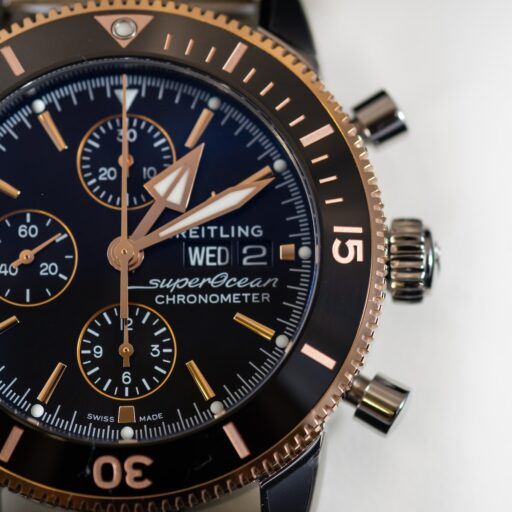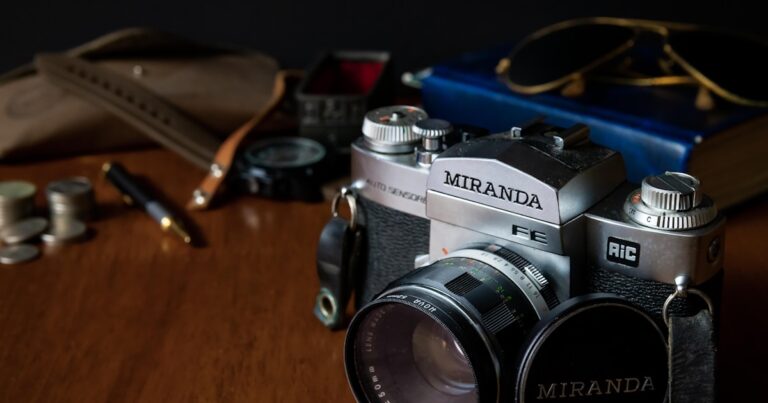Support our educational content for free when you purchase through links on our site. Learn more
When Was the Pocket Watch Invented? ⏳ Discover 10 Surprising Facts (2025)
Imagine holding a tiny mechanical marvel in your hand—a watch so revolutionary that it changed how humanity perceives time itself. But when exactly was the pocket watch invented, and how did it evolve from a bulky curiosity to a symbol of elegance and precision? In this article, we unravel the fascinating story behind the pocket watch’s invention, explore its technological breakthroughs, and reveal 10 surprising facts that every watch enthusiast should know. From the ingenious craftsmanship of Peter Henlein in 1510 to the railroad-grade standards that saved lives, we cover it all.
Whether you’re a collector, history buff, or simply curious about this timeless accessory, we’ll guide you through the types, movements, and cultural impact of pocket watches—and why they still hold a special place in the world of horology today. Ready to discover the secrets ticking inside these classic timepieces? Let’s dive in!
Key Takeaways
- The pocket watch was invented around 1510 by German locksmith Peter Henlein, marking the dawn of portable timekeeping.
- Early pocket watches evolved from pendant clocks to sophisticated devices featuring minute hands, glass covers, and lever escapements.
- Railroad pocket watches set strict accuracy standards to prevent train accidents, making them engineering icons of safety.
- Various types like hunter-case, open-face, and half-hunter offer different styles and functionalities.
- The rise of wristwatches after World War I led to the decline of pocket watches in everyday use, but they remain prized collectibles.
- Prestigious brands such as Patek Philippe, Hamilton, and Waltham shaped pocket watch history and continue to produce exquisite models.
- Caring for vintage pocket watches requires regular servicing, careful handling, and proper storage to preserve their value and function.
👉 Shop Pocket Watches and Brands:
- Patek Philippe: Amazon | Official Site
- Hamilton: Amazon | Official Site
- Waltham: Amazon | Official Site
Ready to add a piece of history to your collection? Check out these iconic brands and find your perfect pocket watch today!
Table of Contents
- Quick Tips and Fascinating Facts About Pocket Watches ⏱️
- The Birth of Timekeeping: When Was the Pocket Watch Invented? 🕰️
- Early Innovations: The Evolution of Pocket Watch Technology 🔧
- Types of Pocket Watches: From Hunter Cases to Open Faces 🧐
- Mechanical Marvels: Exploring Pocket Watch Movements and Mechanisms ⚙️
- Precision Perfected: The Role of Adjusted Movements in Pocket Watches 🎯
- Pocket Watches on the Rails: Their Crucial Role in American Railroad History 🚂
- The Most Complicated Pocket Watches Ever Made: Engineering Wonders 🏆
- The Decline of the Pocket Watch: How Wristwatches Took Over ⌚
- Collecting and Caring for Vintage Pocket Watches: Tips and Tricks 💼
- Pocket Watch Brands That Shaped History: From Patek Philippe to Waltham 🏅
- Pocket Watches in Popular Culture: From Literature to Film 🎬
- Conclusion: Why the Pocket Watch Still Holds a Timeless Charm 💖
- Recommended Links for Further Exploration 🔗
- Frequently Asked Questions (FAQ) About Pocket Watches ❓
- Reference Links and Bibliography for Deep Dives 📚
Quick Tips and Fascinating Facts About Pocket Watches ⏱️
Welcome to the fascinating world of pocket watches! Before we dive deep into the origins and evolution of these timeless treasures, here are some quick nuggets from the watch enthusiasts at Watch Brands™ to get you ticking:
- Invented in 1510 by German locksmith Peter Henlein, pocket watches revolutionized personal timekeeping. Source: Britannica
- Early pocket watches were bulky and worn as pendants before Charles II of England popularized carrying them in waistcoat pockets in the 17th century.
- The term “pocket watch” itself dates back to the 1600s.
- Pocket watches dominated until wristwatches surged in popularity post-World War I.
- Railroad-grade pocket watches had strict accuracy standards to prevent train collisions.
- The most complicated pocket watch ever made, Vacheron Constantin Reference 57260, boasts 57 complications! 😲
- Today, pocket watches remain a symbol of elegance, heritage, and craftsmanship.
Curious about how these mechanical marvels evolved and why they still captivate collectors? Keep reading! And if you want to understand how wristwatches came into the picture, check out our detailed article on Who Invented the Wristwatch in 1904.
The Birth of Timekeeping: When Was the Pocket Watch Invented? 🕰️
The question “When was the pocket watch invented?” takes us back over 500 years to the early 16th century. The credit goes to Peter Henlein, a master locksmith from Nuremberg, Germany, who crafted the first portable timepiece around 1510. These early “clock-watches” were bulky, drum-shaped brass cylinders—nicknamed “Nuremberg eggs”—and were powered by mainsprings, a groundbreaking innovation that allowed clocks to be miniaturized.
Why 1510 Matters
- Before Henlein, clocks were large and stationary.
- The mainspring allowed watches to be carried, though initially worn as pendants.
- Early models only had an hour hand; the minute hand was introduced much later, in the late 1600s.
- These watches were status symbols, often owned by nobility and wealthy merchants.
Henlein’s invention laid the foundation for personal timekeeping, transforming society’s relationship with time. Imagine the leap from sundials and tower clocks to a watch you could carry in your pocket!
For a detailed timeline and evolution, see Wikipedia’s Pocket Watch History.
Early Innovations: The Evolution of Pocket Watch Technology 🔧
Pocket watches didn’t stop evolving after their invention. The 16th to 18th centuries saw significant technological leaps:
| Innovation | Approximate Date | Impact on Pocket Watches |
|---|---|---|
| Introduction of Minute Hand | Late 1600s | Improved time precision |
| Glass Crystal Covers | Circa 1610 | Protected dials from damage |
| Lever Escapement | 1755 | Enhanced accuracy and reliability |
| Stem-Wind & Stem-Set | 1842 | Eliminated need for winding keys |
| Standardized Parts | Mid-1800s | Mass production and affordability |
The Lever Escapement, invented by Thomas Mudge in 1755, was a game-changer. It replaced the less reliable verge escapement, making watches more accurate and durable. Later, Adrien Philippe (of Patek Philippe fame) introduced the stem-wind and stem-set mechanism, which allowed winding and setting the time via the crown, a feature still standard today.
These innovations made pocket watches more user-friendly and reliable, paving the way for their golden age.
Types of Pocket Watches: From Hunter Cases to Open Faces 🧐
Pocket watches come in various styles, each with unique features and historical significance. Here’s a breakdown of the most popular types:
| Type | Description | Pros | Cons |
|---|---|---|---|
| Open-Face (Lépine) | No protective cover; dial fully visible. Pendant at 12 o’clock. | Easy to read, sleek design. | Vulnerable to scratches and damage. |
| Hunter-Case | Spring-hinged metal lid protects the dial. | Protects crystal, elegant appearance. | Requires opening to check time. |
| Full Hunter | Ornate engraving on the outer lid. | Highly decorative, collectible. | Heavier, more delicate. |
| Double Hunter | Lids open on front and back, showcasing movement. | View movement, great for enthusiasts. | More complex, pricier maintenance. |
| Half-Hunter | Outer lid with a glass panel or hole to see time without opening. | Combines protection and convenience. | Slightly bulkier. |
| Nurse’s Fob Watch | Smaller dial, worn upside down on a strap for easy reading. | Practical for medical professionals. | Less common, niche market. |
Fun fact: The hunter-case design was popularized in the 19th century to protect the glass crystal from damage during outdoor activities. The term “hunter” comes from its use by hunters and outdoorsmen.
If you’re exploring pocket watches for style or collection, knowing these types helps you pick the perfect one to match your personality and needs.
Mechanical Marvels: Exploring Pocket Watch Movements and Mechanisms ⚙️
At the heart of every pocket watch lies its movement — the intricate mechanism that keeps time. Understanding these movements is key to appreciating their craftsmanship.
Key Types of Pocket Watch Movements
- Key-Wind, Key-Set: Early watches required a separate key to wind the mainspring and set the time. Delicate and prone to loss of the key.
- Stem-Wind, Stem-Set: Introduced in the mid-1800s by Adrien Philippe, this allowed winding and time setting via the crown stem. A huge convenience upgrade.
- Stem-Wind, Lever-Set: Required pulling out a small lever to set the time, commonly mandated for railroad watches to prevent accidental time changes.
- Stem-Wind, Pin-Set: Used a small pin to enable time setting, less common but notable.
Movement Components to Know
- Escapement: Regulates the release of energy; lever escapements dominate due to accuracy.
- Jewels: Synthetic rubies reduce friction; more jewels generally mean smoother operation.
- Balance Wheel: Oscillates to keep time steady.
- Mainspring: Stores energy when wound.
Precision Perfected: The Role of Adjusted Movements in Pocket Watches 🎯
If you’ve ever seen a pocket watch movement marked “Adjusted to 5 positions” or “Temperature adjusted,” you’re looking at a precision instrument designed for accuracy under varying conditions.
What Does “Adjusted” Mean?
Watchmakers test and calibrate movements to compensate for:
- Positional Variations: Watches behave differently when dial up, dial down, pendant up/down/left/right.
- Temperature Changes: Metals expand and contract, affecting timing.
- Isochronism: The watch’s ability to keep consistent time regardless of mainspring tension.
Railroad watches, for example, had to be adjusted to at least five positions and temperature to meet strict accuracy standards (within 30 seconds per week). This was crucial for safety on the rails.
Why it matters: An adjusted watch is a mark of quality and craftsmanship, often commanding higher collector value.
Pocket Watches on the Rails: Their Crucial Role in American Railroad History 🚂
Railroads in the late 19th century depended heavily on accurate timekeeping to avoid catastrophic collisions. Pocket watches became the official timekeepers of the rails, leading to the establishment of stringent standards.
The Kipton Incident and Its Aftermath
In 1891, a fatal train wreck in Kipton, Ohio, was traced to a conductor’s faulty watch. This tragedy sparked the General Railroad Timepiece Standards in 1893, which included:
- Open-face design with winding stem at 12 o’clock.
- Minimum size 16 or 18.
- At least 17 jewels.
- Adjusted to 5 positions and temperature.
- Accuracy within 30 seconds per week.
- Bold black Arabic numerals on white dial for legibility.
- Lever-set mechanism to prevent accidental time changes.
Brands like Waltham, Elgin, and Hamilton became synonymous with railroad-grade watches. These watches were rugged, reliable, and precise — the backbone of railroad safety.
For collectors, railroad pocket watches represent a fascinating intersection of engineering and history.
The Most Complicated Pocket Watches Ever Made: Engineering Wonders 🏆
If you think your smartphone is complex, wait until you hear about these mechanical masterpieces:
| Watch Model | Year | Number of Complications | Notable Features |
|---|---|---|---|
| Vacheron Constantin Reference 57260 | 2015 | 57 | World’s most complicated watch; multiple calendars, alarms, celestial charts |
| Patek Philippe Calibre 89 | 1989 | 33 | Multi-calendar, moon phases, star charts |
| Patek Philippe Henry Graves Supercomplication | 1933 | 24 | Minute repeater, perpetual calendar, celestial map |
Complications refer to any function beyond basic timekeeping — think moon phases, chronographs, alarms, and more. These watches are feats of micro-engineering and artistry, often taking years to design and assemble.
Owning or even seeing one of these is like holding a piece of horological history.
The Decline of the Pocket Watch: How Wristwatches Took Over ⌚
The pocket watch’s reign began to wane in the early 20th century, especially during and after World War I.
Why Did Wristwatches Win?
- Convenience: Soldiers found wristwatches easier to check during combat.
- Fashion Shift: The wristwatch became a symbol of modernity.
- Mass Production: Wristwatches became more affordable and reliable.
- Technological Advances: Quartz movements in the 1970s further boosted wristwatch popularity.
By the 1940s, pocket watches were largely relegated to formal wear or collectors. However, the 1970s and 80s saw a nostalgic revival with the return of three-piece suits and steampunk culture.
Today, pocket watches are cherished heirlooms and statement pieces rather than everyday timekeepers.
Collecting and Caring for Vintage Pocket Watches: Tips and Tricks 💼
If you’re thinking of diving into pocket watch collecting, here’s what the Watch Brands™ team recommends:
What to Look For
- Movement Condition: Is it running smoothly? Look for “Adjusted” markings.
- Case Material: Gold, silver, brass, or stainless steel? Gold and silver add value.
- Brand: Patek Philippe, Waltham, Hamilton, Elgin, and Omega are top choices.
- Dial Condition: Cracks or discoloration affect value.
- Provenance: Original boxes, papers, and history boost collectability.
Caring for Your Pocket Watch
- Regular Servicing: Every 3-5 years by a professional watchmaker.
- Proper Storage: Keep in a dry, padded case to avoid scratches.
- Winding: Wind daily at the same time; don’t overwind.
- Avoid Magnets: They can disrupt the movement.
Collecting pocket watches is like holding history in your hand — each tick tells a story.
Pocket Watch Brands That Shaped History: From Patek Philippe to Waltham 🏅
Some brands have become legends in the pocket watch world:
| Brand | Origin | Notable Contributions | Collector Appeal |
|---|---|---|---|
| Patek Philippe | Switzerland | Pioneer of stem-wind, stem-set; ultra-complicated watches | High-end, prestigious |
| Waltham | USA | Mass production, railroad-grade watches | Affordable, historical |
| Hamilton | USA | Railroad watches, military issue | Durable, collectible |
| Elgin | USA | Large-scale production, quality movements | Popular, accessible |
| Omega | Switzerland | Precision watches, early wristwatch innovator | Luxury, reliable |
Each brand has its own story and style, making the hunt for your perfect pocket watch all the more thrilling.
👉 CHECK PRICE on:
- Patek Philippe Pocket Watches: Amazon | Patek Philippe Official Website
- Waltham Pocket Watches: Amazon | Waltham Official Website
- Hamilton Pocket Watches: Amazon | Hamilton Official Website
Pocket Watches in Popular Culture: From Literature to Film 🎬
Pocket watches have long been symbols of sophistication, mystery, and nostalgia in popular culture:
- Literature: Sherlock Holmes famously carried a pocket watch, symbolizing his meticulous nature.
- Film: Iconic characters like the White Rabbit in Alice in Wonderland obsess over their pocket watches, emphasizing time’s importance.
- Music: Songs like “Pocket Watch” by The Civil Wars evoke themes of time and memory.
- Fashion: Pocket watches often appear in steampunk aesthetics, blending Victorian style with futuristic fantasy.
These appearances keep the pocket watch alive in the public imagination, far beyond its practical use.
Conclusion: Why the Pocket Watch Still Holds a Timeless Charm 💖
So, when was the pocket watch invented? We traced its roots all the way back to 1510, thanks to the ingenuity of Peter Henlein in Nuremberg. From those bulky “Nuremberg eggs” to the elegant, precision-engineered masterpieces of the 19th and 20th centuries, pocket watches have evolved alongside human history—reflecting societal changes, technological leaps, and shifting fashions.
Positives:
✅ Pocket watches are exquisite examples of mechanical craftsmanship, often featuring intricate movements and complications.
✅ They carry rich historical significance and timeless style, making them prized collectibles and heirlooms.
✅ Railroad-grade pocket watches set the standard for precision and reliability in timekeeping.
✅ Many prestigious brands like Patek Philippe and Hamilton continue to honor this tradition with high-quality models.
Negatives:
❌ Compared to wristwatches, pocket watches are less convenient for everyday wear.
❌ They require regular maintenance and careful handling to preserve their delicate mechanisms.
❌ Modern digital devices have largely supplanted their practical use.
Our Recommendation:
If you appreciate horological history, mechanical artistry, or simply want a unique accessory that sparks conversation, a pocket watch is an excellent choice. Whether you’re a collector, a fashion enthusiast, or a railroad history buff, there’s a pocket watch out there that will resonate with you. For everyday practicality, however, wristwatches or smartwatches remain more convenient.
Remember that pocket watches are not just timekeepers—they are portable stories, ticking reminders of craftsmanship and culture. So next time you see one, you’re holding centuries of innovation in your hand.
Recommended Links for Further Exploration 🔗
👉 Shop Pocket Watches and Brands:
- Patek Philippe Pocket Watches: Amazon | Patek Philippe Official Website
- Waltham Pocket Watches: Amazon | Waltham Official Website
- Hamilton Pocket Watches: Amazon | Hamilton Official Website
Books on Pocket Watches and Horology:
- The Pocket Watch Handbook by Ryan Schmidt — Amazon
- Watchmaking by George Daniels — Amazon
- A Man and His Watch by Matt Hranek — Amazon
Frequently Asked Questions (FAQ) About Pocket Watches ❓
What is the history of pocket watches and their evolution over time?
Pocket watches were invented in 1510 by Peter Henlein, who miniaturized clock mechanisms using the mainspring. Initially worn as pendants, they became pocket accessories in the 17th century after Charles II popularized waistcoats. Over centuries, pocket watches evolved from heavy, single-hand devices to precision instruments with minute hands, glass covers, and complex escapements like the lever escapement. The 19th century brought mass production and railroad-grade standards, making them accessible and reliable. Despite declining after WWI due to wristwatch popularity, pocket watches remain cherished collectibles.
How did pocket watches influence the development of modern wristwatches and timekeeping?
Pocket watches laid the groundwork for portable timekeeping. Their mechanical innovations—such as stem-wind mechanisms and escapements—were adapted into wristwatches. During WWI, soldiers found wristwatches more practical, accelerating their adoption. The precision standards developed for railroad pocket watches influenced accuracy expectations for wristwatches. Thus, the pocket watch is the mechanical ancestor of today’s wristwatches, bridging traditional craftsmanship and modern convenience.
What are some notable brands that still produce high-quality pocket watches today?
Several prestigious brands continue to honor the pocket watch tradition:
- Patek Philippe: Renowned for ultra-complicated, handcrafted pocket watches.
- Hamilton: Famous for durable railroad-grade watches and military models.
- Waltham: Historic American brand known for mass production and quality.
- Omega: Offers luxury pocket watches with Swiss precision.
These brands blend heritage with modern manufacturing, appealing to collectors and enthusiasts alike.
Are pocket watches still a viable and practical timekeeping option in the modern era?
While pocket watches are less practical than wristwatches or smart devices for daily use, they remain viable for those valuing style, tradition, and craftsmanship. They serve as elegant accessories for formal occasions, collectibles, or conversation pieces. With proper care and maintenance, pocket watches can function reliably for decades. However, for convenience and functionality, wristwatches or digital devices are generally preferred.
How should I care for and maintain a vintage pocket watch?
- Wind your watch daily at the same time, avoiding overwinding.
- Have it serviced every 3-5 years by a professional watchmaker.
- Store it in a dry, padded case to prevent scratches and moisture damage.
- Keep it away from magnets and extreme temperatures.
- Handle with clean hands to avoid oils and dirt.
Proper care preserves both function and value, ensuring your pocket watch remains a treasured heirloom.
Reference Links and Bibliography for Deep Dives 📚
- Wikipedia: Pocket Watch — Comprehensive historical overview
- Frankenmuth Clock Company: History of the Pocket Watch
- Brelsen: The Pocket Watch, its origins and everything you need to know
- Patek Philippe Official Website
- Hamilton Watch Official Website
- Waltham Watch Official Website
- Watch Brands™ Luxury Watch Brands
- Watch Brands™ Guide to Buying Watches
Thank you for joining us on this journey through the rich history and enduring allure of the pocket watch. Whether you’re a seasoned collector or a curious newcomer, these timeless treasures continue to inspire and captivate. Tick-tock, the story never ends! ⏳







